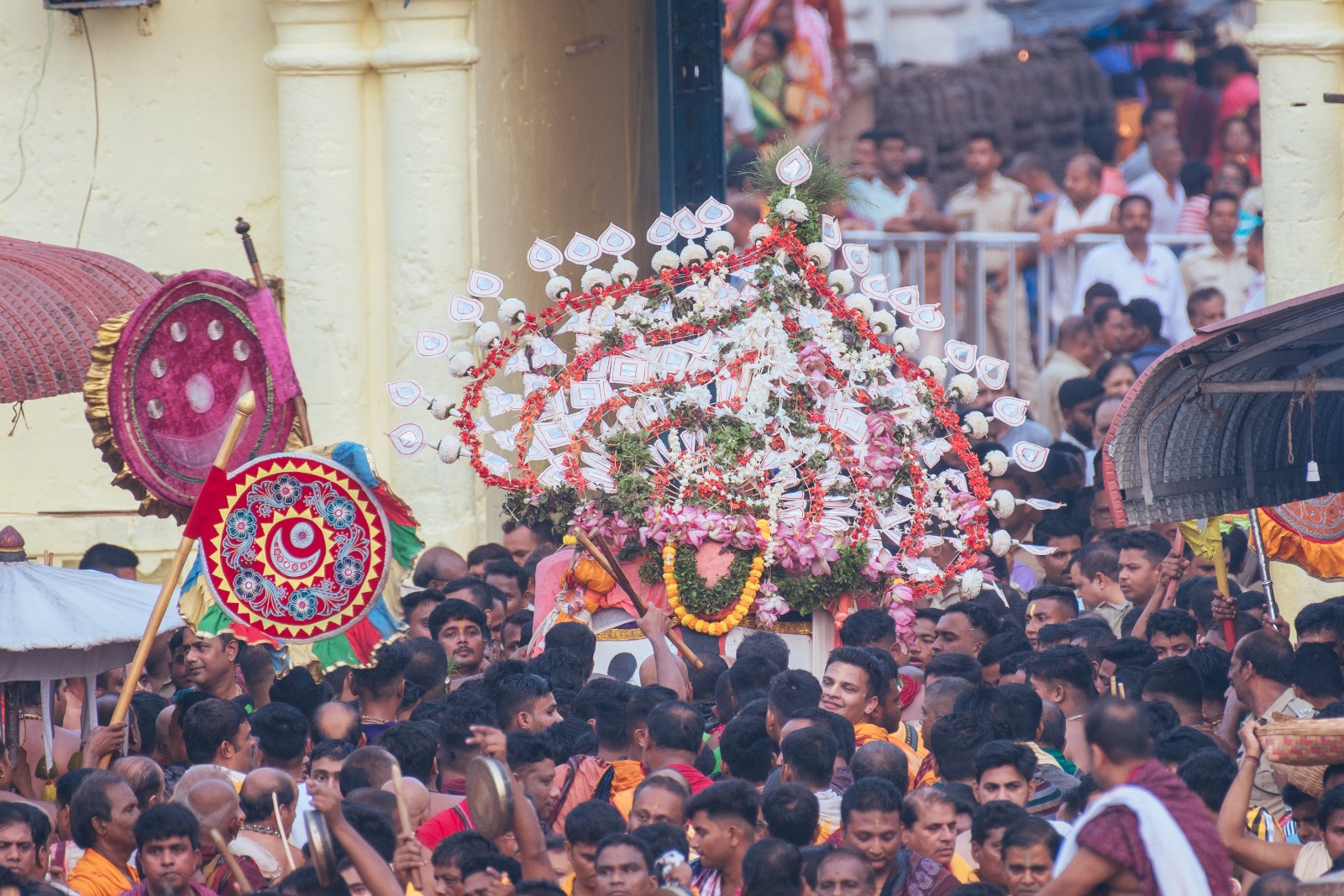Puri: The journey of the deities from Garbha Griha to outside, starts with a spectacular royal procession called Pahandi Bije.
“Pahandi” originated from the Sanskrit word “Padamundanam” means a slow step-by-step imbalanced movement just like a child who is learning to walk. “Bije” stands for the procession of the King or the Gods.
During Pahandi, the deities are pulled, pushed and dragged in rhythmic movement with the accompaniment of the beat of cymbals, drums and chanting of their names in chorus by devotees. The Deities do not touch the floor during the Pahandi ritual.
Lord Sudarshana and Goddess Subhadra do not have arms and they are not heavy, so they are carried on the shoulders in a reclining position, and they do not touch the floor. On the other hand, Lord Jagannath and Lord Balabhadra are quite heavy and it is difficult to move them without touching the floor, so a wooden pillar is fixed to their backs and thick silken ropes are tied around their heads and waists. During Pahandi Bije, the wooden pillar is touching the floor but not the Deities. Lord Balabhadra & Lord Jagannath are carried with little pauses in forward and backward motions.
What are the different forms of Pahandi?
There are two forms of Pahandi. The first form is called “Dhadi Pahandi”. In Odia language ‘Dhadi’ means ‘Line’, so in Dhadi Pahandi procession the Deities move simultaneously in a line one after the other in close succession. In this form, one can see all four Gods, in a line, one after the other. Dhadi Pahandi is a group movement. The second form is called “Goti Pahandi”. In Odia language ‘Goti’ means ‘Alone’, so in Goti Pahandi procession one Deity moves at a time.
The next Deity moves only after the preceding Deity is reached at the appropriate place. Goti Pahandi is an individual movement. During Pahandi, irrespective of the form, Lord Sudarshana moves first, then Lord Balabhadra, Goddess Subhadra and finally Lord Jagannath are taken out from the inner Sanctum.










